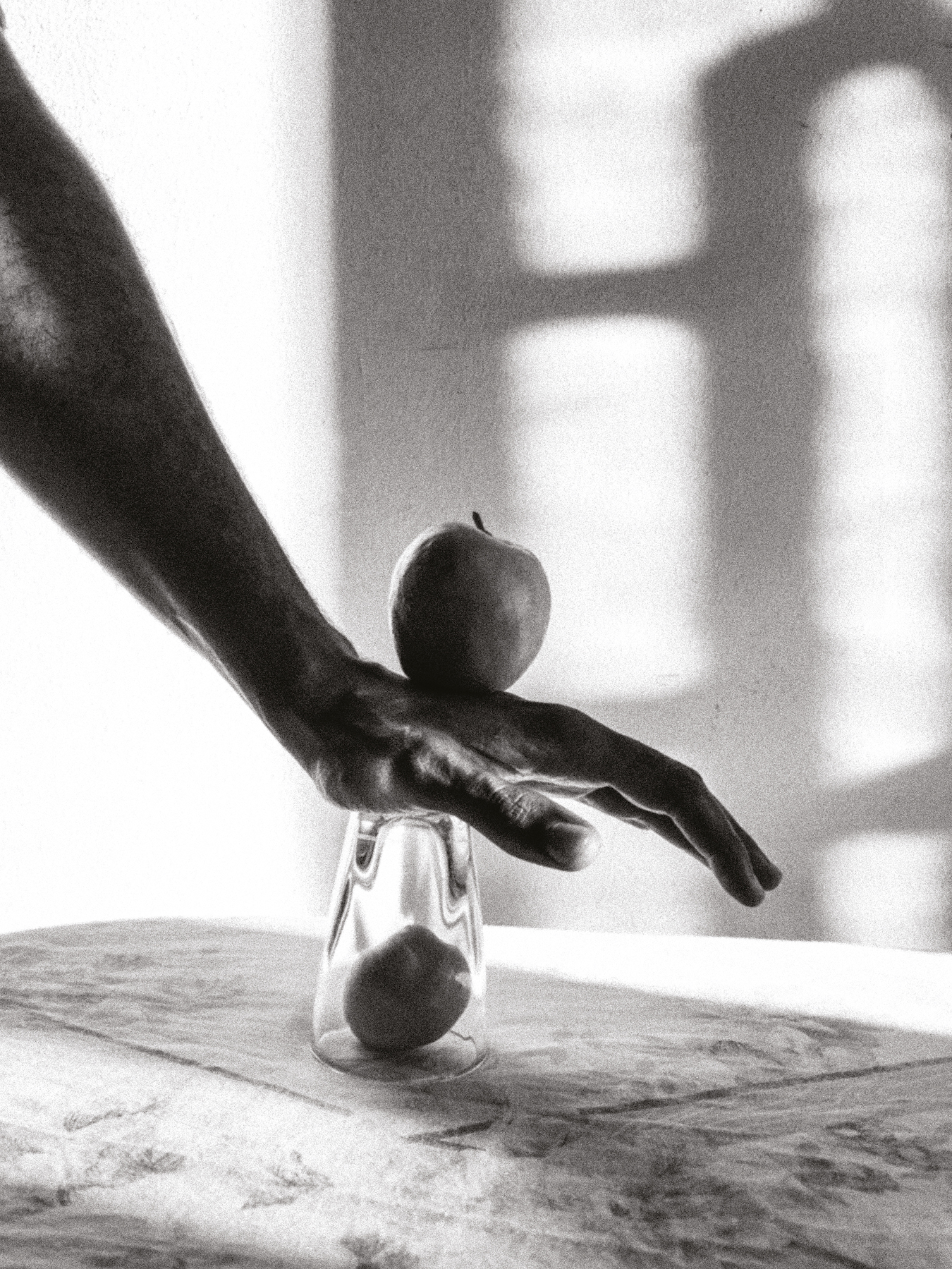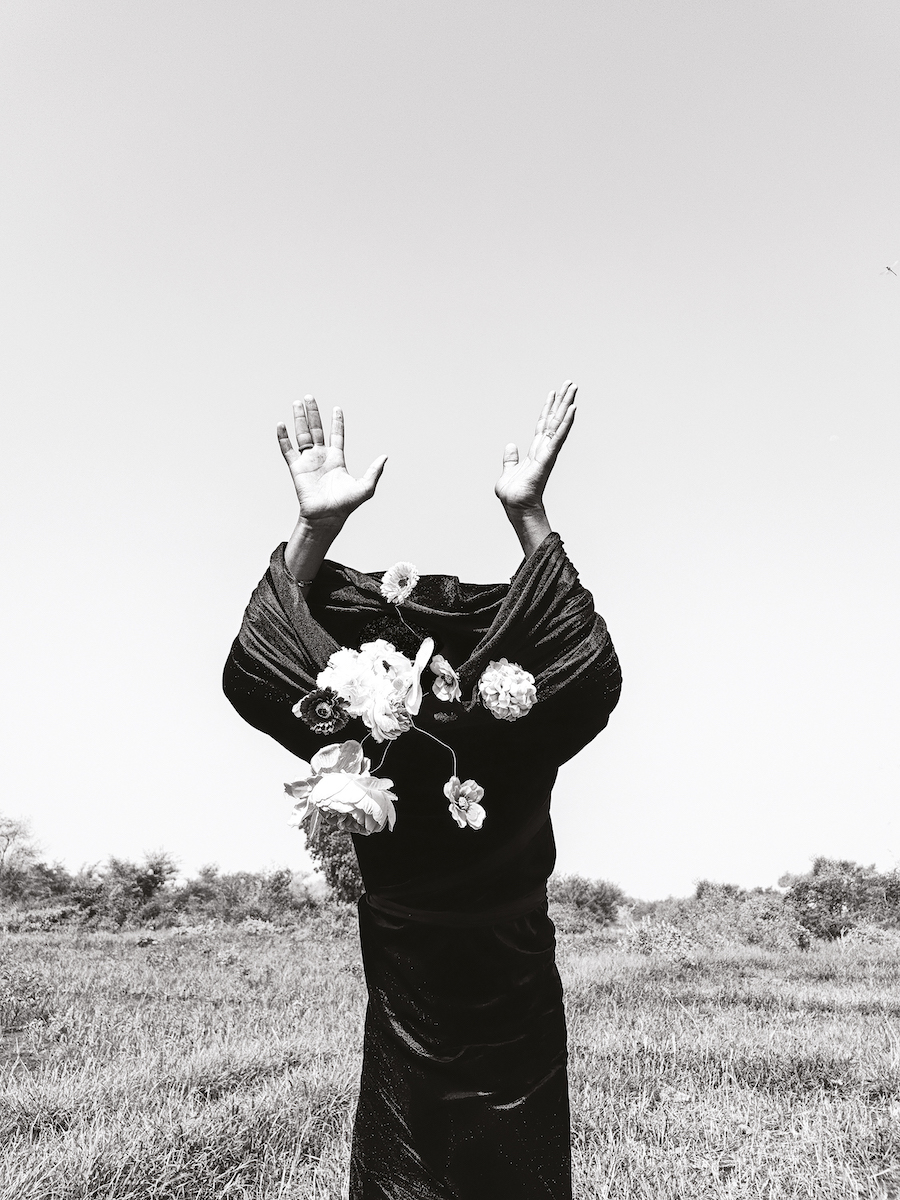A Vessel Never Full. All images © Hashim Nasr
From exile in Egypt, the Sudanese artist mixes earthly symbolism with activist portraits to evoke freedom and challenge injustice
Hashim Nasr is a self-taught visual artist whose work delves into themes of heritage, identity and society. Born in 1990 in Khartoum, Sudan, his journey from dentistry graduate to acclaimed artist based in Alexandria, Egypt, is marked by his exploration of the subconscious through avant-garde photography, informed by his Sudanese heritage. “To truly establish a robust foundation for self-expression, I needed to draw inspiration from my roots,” he explains.
This connection to his homeland became particularly poignant as he navigated the shifting political climate of Sudan, using his lens to document its upheavals and narratives from within. The December 2018 revolution in Sudan marked a pivotal moment in Nasr’s practice, shaping his perception of the power of imagery in documenting resistance and resilience. In the absence of extensive media coverage, photography emerged as a critical tool for capturing the struggles and aspirations of the Sudanese people, and Nasr’s work became a reflection of these turbulent times and a nation in flux.

“My aim was to prompt viewers to delve into the intangible aspects of these crises, the emotions that transcend mere visual representation”
Navigating complex sociopolitical issues, Nasr blends artistic expression with activism, using conceptual art as a medium to address injustice. His work serves as a visual commentary on freedom and the pursuit of a better tomorrow for Sudan. “Conceptual art provides me with a broad space for visual expression of the issues that concern me in my society,” he says. “I’ve sought to capture the essence of human experience through a lens of introspection and exploration.”
The series On War and Displacement was born from a period that left an indelible mark on Nasr. Following a civil war between two rival factions of the military government of Sudan, Nasr and his family found themselves in Khartoum navigating the chaos of bombings and air strikes on 15 April 2023 during Ramadan.
“I can still vividly recall the image of my family huddling under the dining table, seeking refuge in what seemed like the safest spot amidst the turmoil. It was in those harrowing moments that I recognised the urgent need to capture and immortalise the raw emotions that engulfed us,” he says.



Nasr wants to use art as a vehicle for positive change and recently decided to donate the proceeds from his print sales to those in need. “It’s the simplest act I can do to support the people in Sudan while I’m here in exile in Egypt,” he explains. Through his art, Nasr not only raises awareness but also actively contributes to alleviating suffering. Peggy Sue Amison, the artistic director of East Wing and who recommended Nasr as a One to Watch, summarises: “Hashim Nasr’s work serves as a poignant reminder of the power of art to transcend boundaries and inspire change.”
From intimate portraits to expansive landscapes, Nasr’s portfolio encompasses a diverse range of subjects and settings, but he has mastered the art of adapting to different environments while maintaining a cohesive body of work. His images shift from raw emotions captured in street photography to explorations of the nuances of self- portraiture, but certain hallmarks have emerged, including incorporating crafted objects into his visual concepts. Using elements of his Sudanese heritage, Nasr has created a body of work that resonates globally.

Nasr also imbues his work with a sense of connection to the natural world, drawing inspiration from the vibrancy of floral motifs. These elements serve as both aesthetic flourishes and symbolic anchors, grounding the viewer in a shared understanding of humanity’s relationship with the earth. Each photograph becomes a platform for dialogue, inviting viewers to engage with pressing issues and contemplate art’s role in affecting change.
Nasr says he does not intend to replicate grim scenes but instead seeks to encapsulate the essence of the sentiments that permeated those dire circumstances, using dreamlike visuals and metaphors. “Through this artistic approach, my aim was to prompt viewers to delve into the intangible aspects of these crises, the emotions that transcend mere visual representation,” he explains. “My perspective on photography revolves around using it as a conduit to establish an emotive connection through metaphorical imagery.”

